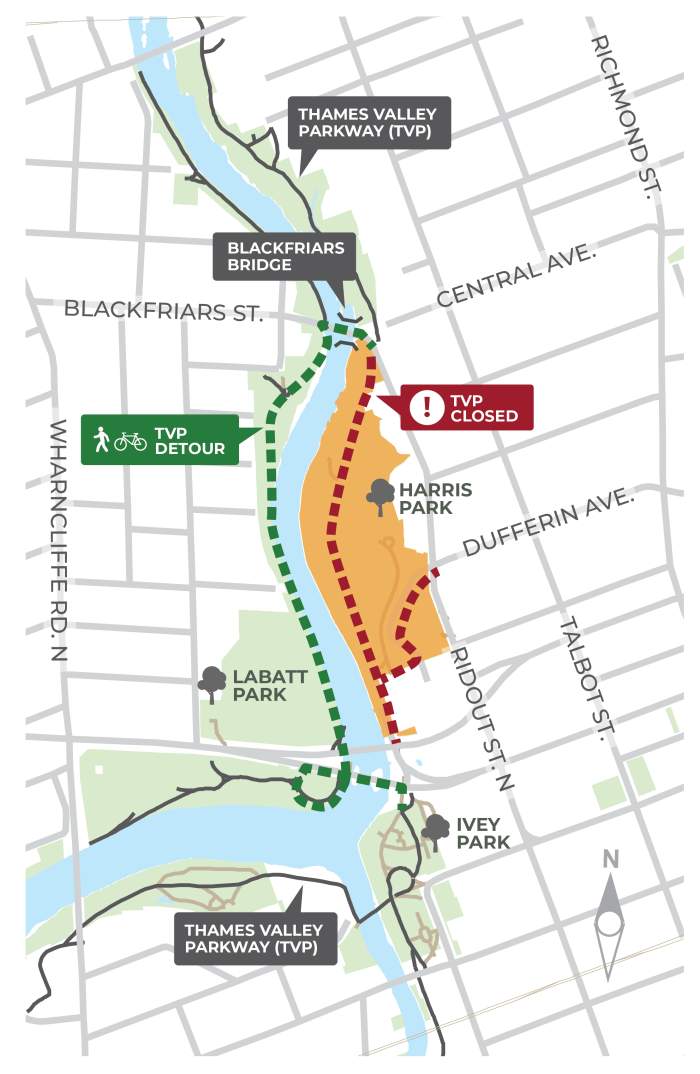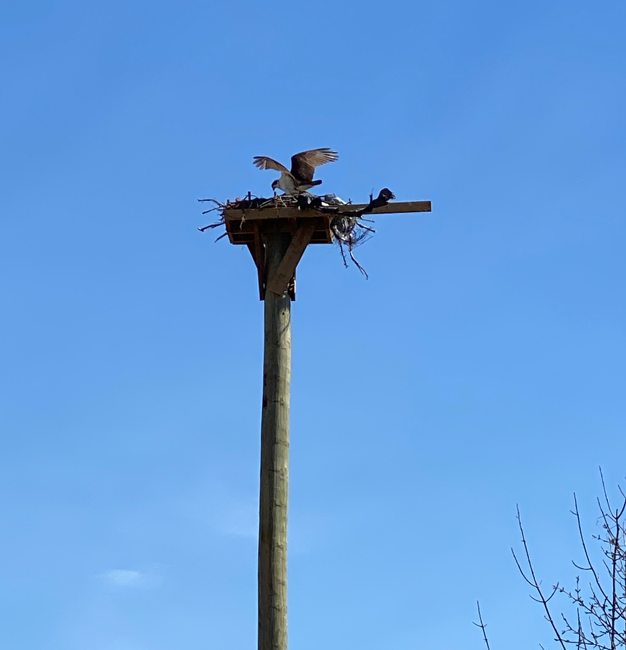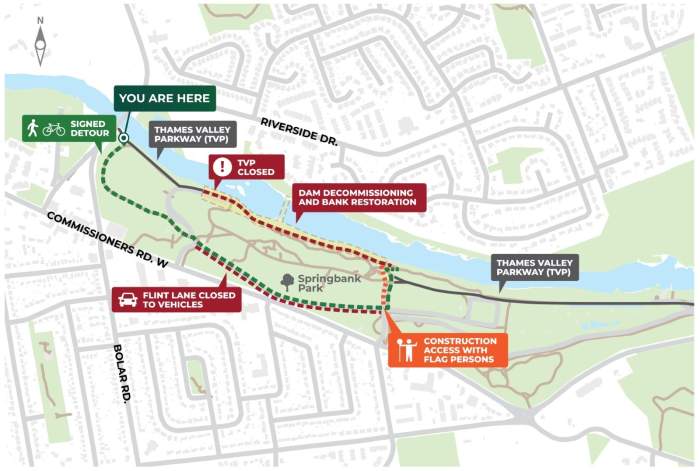Several stormwater management infrastructure projects are planned to begin construction soon this summer helping improve London’s resiliency to severe weather, flooding, and the impacts of climate change.
“Significant rain events like what London experienced this month demonstrate how important it is that our city continues to invest in stormwater infrastructure,” says Mayor Josh Morgan. “Making ongoing improvements will help us stay ready for severe weather and will help London continue to adapt to climate change.”
This year, the City is making important upgrades to improve our resiliency to large storms, improve stormwater management ponds, and upgrade erosion control structures to protect the Thames River’s shoreline. Underground, 12.5 kilometres of sanitary and storm sewers are being replaced or added across projects throughout the city, and more than 3 kilometres of watermain are being relined in 2024.
“Strong and reliable stormwater infrastructure supports our rapidly growing city,” says Ashley Rammeloo, Director, Water, Wastewater, and Stormwater. “Planning and constructing for the future helps our city accommodate more homes and development, while increasing our capacity for storms and flooding events."
Harris Park shoreline restoration and park improvements
Crews have begun site preparations for construction of the planned Harris Park shoreline restoration project. The infrastructure project will remove the old and deteriorated stone gabion baskets that supported the shore from erosion in the past, and they will be replaced with naturalized infrastructure which will continue to protect the shoreline into the future. New park features will also be added including a new lookout point along the path, improved river access for paddlers, additional trees, and ecological improvements to support the riverbank and aquatic habitats.
During this work, Harris Park and the Thames Valley Parkway (TVP) between Queens Avenue and Blackfriars Bridge will be closed until December 2024 to ensure safety around the construction zone. Detours around Harris Park have been established for pathway users and identified with signage.
For more information about closures along the Thames Valley Parkway this summer, please visit london.ca/thames-valley-parkway-tvp

Above: A map of Harris Park and the Thames Valley Parkway detour for people using the multi-use path.
Hyde Park stormwater management improvements
Several stormwater management projects have been constructed in the Hyde Park area over the past few years.
Work this year will focus on decommissioning the temporary Matthews Hall Stormwater Management Pond and retrofitting the stormwater management facility on the north side of the CP Rail line east of Hyde Park Road.
This work will construct a new large storm trunk sewer, provide additional erosion and flood storage control, and create a new storm culvert under the nearby CP Rail line.
Construction is anticipated to begin next week and continue until late fall 2024.
Last year’s improvements to the stormwater management pond west of Hyde Park Road increased the size of the pond and added several ecological features such as a new platform for Osprey nesting and wetland features for turtles. New pathways around the ponds were also constructed for Londoners to use.


Above: This new wetland feature was created last year west of Hyde Park Road and the Rotary Trail with new pathways and ecological features.
Springbank Dam decommissioning
Londoners visiting Springbank Park will see increased construction activity around the Springbank Dam beginning later this August. The project will be decommissioning the dam and removing the gates. The concrete structure of the dam will stay in place, while the mechanical components, control building, and the steel gates are being removed this summer. 175 metres of concrete bank along the river will also be removed and restored with a naturalized shoreline along with tree plantings and habitat improvements.
While this work takes place, the Thames Valley Parkway near the dam will be closed, and a detour around the construction will be available for path users.
Construction will continue until December 2024.

Above: A map of Springbank Park and the Thames Valley Parkway detour for people using the multi-use path when construction begins.
Mud Creek
Improvements continue to be made to Mud Creek this summer. Over the past three years, the creek’s stormwater capacity has been increased through a series of phased construction projects. The first phase was completed in 2023 near Wonderland Road and Riverside Drive.
The next phase of the project began earlier this summer and is constructing a new wider culvert underneath Oxford Street West near Proudfoot Lane to help prevent future flooding during severe weather events.
In the coming weeks, crews will begin to widen and deepen sections of Mud Creek between Oxford Street West and the CP Rail line to the south. The area will be replanted with native trees and plants, and a new path will be added along the creek for residents. Construction is expected to be complete by fall 2025.

Above: Mud Creek after the first phase of construction was completed to improve the creek near Wonderland Road and Riverside Drive in 2023.
Flood protection at Greenway and Adelaide Wastewater Treatment Plants
The City is preparing to construct earth berms and walls around the perimeter of Greenway and Adelaide Wastewater Treatment Plants later this year. The improvements will protect these critical facilities from flooding along the river and help keep them operational during a significant flooding event.
Site preparations are continuing around these two facilities and construction is anticipated to begin this fall.
